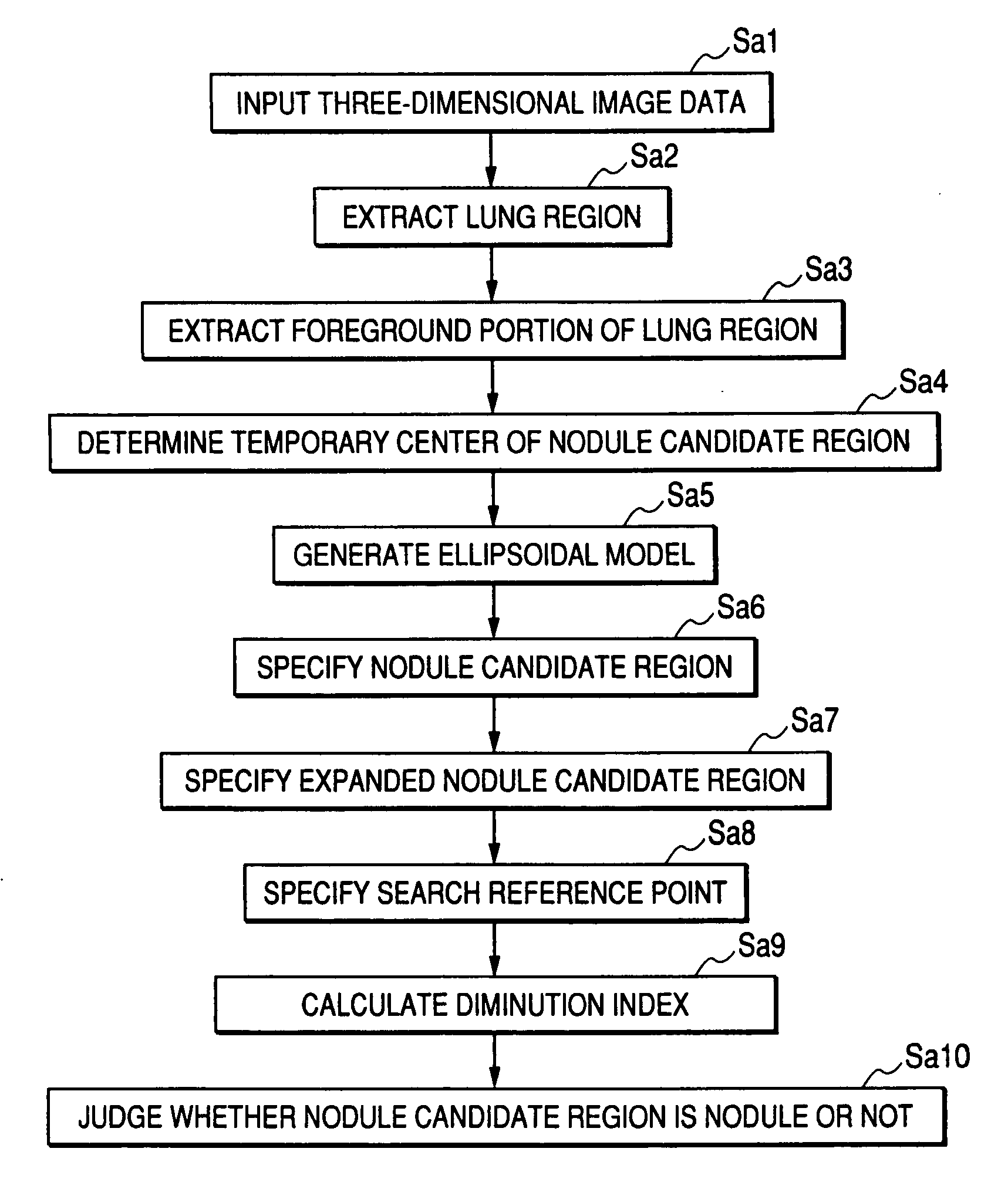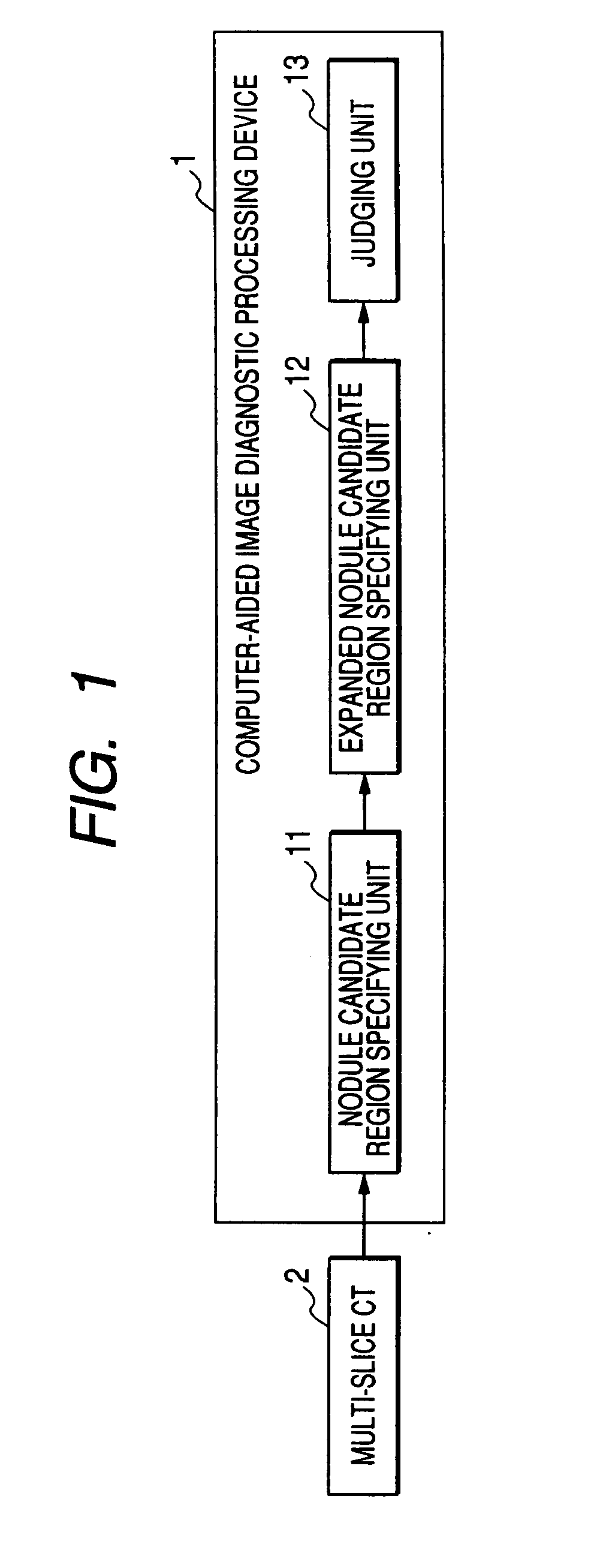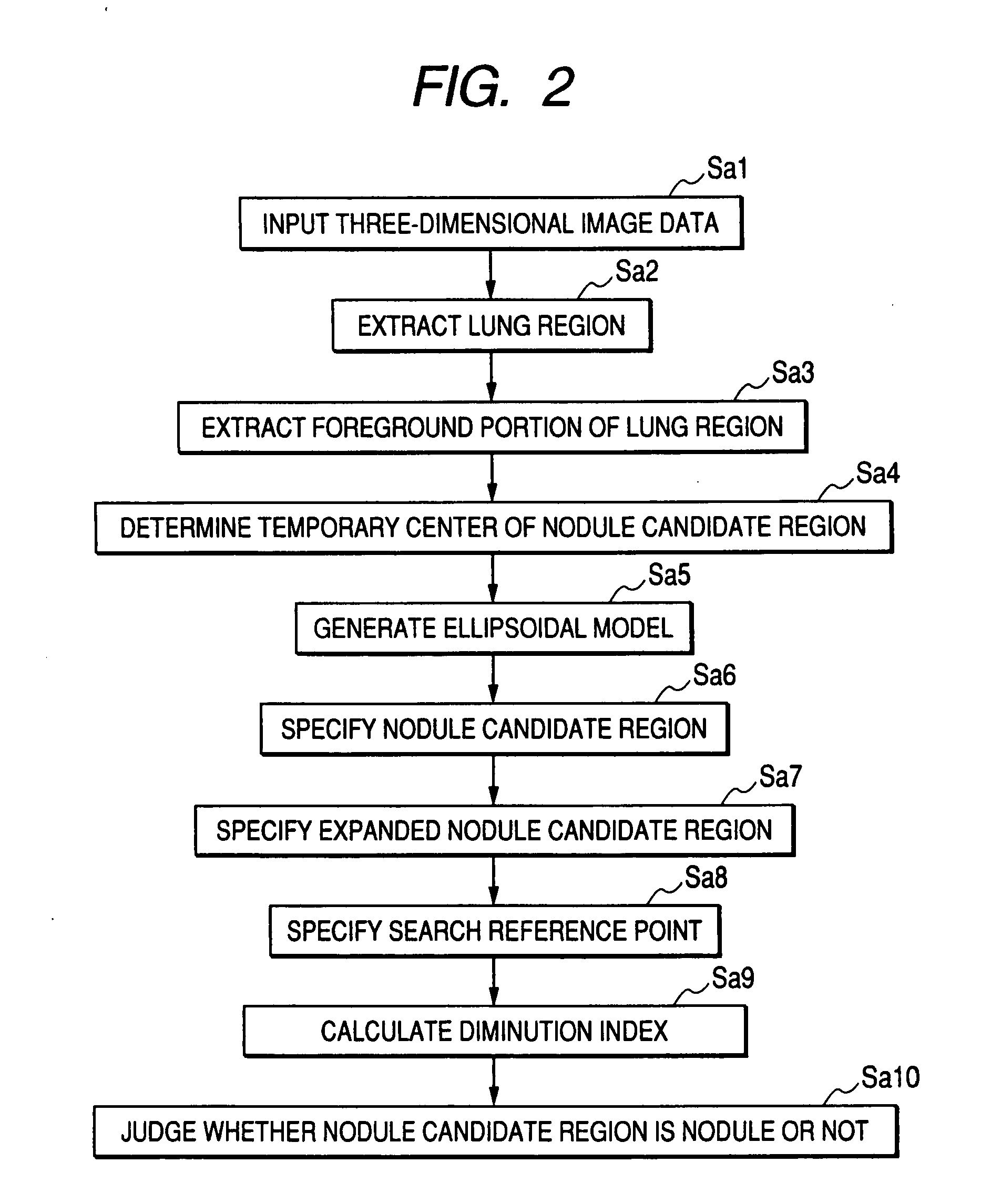Image diagnostic processing device and image diagnostic processing program
a technology of image diagnostic and processing program, which is applied in the field of image diagnostic processing device and image diagnostic processing program, can solve the problems of not accurately discriminating nodules and lung blood vessels by feature quantities, and achieve the effect of accurate discrimination
- Summary
- Abstract
- Description
- Claims
- Application Information
AI Technical Summary
Benefits of technology
Problems solved by technology
Method used
Image
Examples
first embodiment
[0055]FIG. 1 is a view showing the configuration of a computer-aided image diagnostic processing device 1 according to a first embodiment using an image diagnostic processing device according to the present invention.
[0056] The computer-aided image diagnostic processing device 1 shown in FIG. 1 processes three-dimensional image data acquired by a multi-slice CT 2. As shown in FIG. 1, the computer-aided image diagnostic processing device 1 includes a nodule candidate region specifying unit 11, an expanded nodule candidate region specifying unit 12 and a judging unit 13.
[0057] The computer-aided image diagnostic processing device 1 can, for example, use a general-purpose computer device as basic hardware. The nodule candidate region specifying unit 11, the expanded nodule candidate region specifying unit 12 and the judging unit 13 can be embodied by executing an image diagnostic processing program on a processor mounted in the computer device. At this time, the computer-aided image ...
second embodiment
[0101]FIG. 17 is a view showing the configuration of a computer-aided image diagnostic processing device 3 using the image diagnostic processing device according to the present invention. In FIG. 17, the same portions as FIG. 1 are denoted by the same reference numerals and their detailed description will be omitted.
[0102] The computer-aided image diagnostic processing device 3 shown in FIG. 17 processes three-dimensional image data acquired by a multi-slice CT 2. As shown in FIG. 17, the computer-aided image diagnostic processing device 3 includes a nodule candidate region specifying unit 11 and a judging unit 31.
[0103] The computer-aided image diagnostic processing device 3 can, for example, use a general-purpose computer device as basic hardware, similar to the computer-aided image diagnostic processing device 1 according to the first embodiment.
[0104] The judging unit 31 judges whether a nodule candidate region is a nodule or not, based on a foreground occupancy ratio of an e...
third embodiment
[0114] The first or second embodiment is efficient for the detection of solid nodules. However, with respect to a ground glass opacity (GGO) type nodule, it is difficult to apply an ellipsoidal model to the GGO type nodules.
[0115] In the GGO type nodule, the existing lung blood vessel or a component having a higher intensity is observed. That is, an object having relatively high contrast, which is surrounded by an object having relatively low contrast such as the GGO, may exist. Accordingly, in the first or second embodiment, the following problems may be caused.
[0116] (1) When the lung region is divided into the foreground portion and the background portion by an adaptive thresholding process, only a portion of the nodule may enter the foreground portion in the GGO type nodule. In such a case, the value for transforming the distance of the foreground portion is set to the initial radius of the ellipsoidal model, the actual radius of the nodule is significantly small.
[0117] (2) S...
PUM
 Login to View More
Login to View More Abstract
Description
Claims
Application Information
 Login to View More
Login to View More - R&D
- Intellectual Property
- Life Sciences
- Materials
- Tech Scout
- Unparalleled Data Quality
- Higher Quality Content
- 60% Fewer Hallucinations
Browse by: Latest US Patents, China's latest patents, Technical Efficacy Thesaurus, Application Domain, Technology Topic, Popular Technical Reports.
© 2025 PatSnap. All rights reserved.Legal|Privacy policy|Modern Slavery Act Transparency Statement|Sitemap|About US| Contact US: help@patsnap.com



